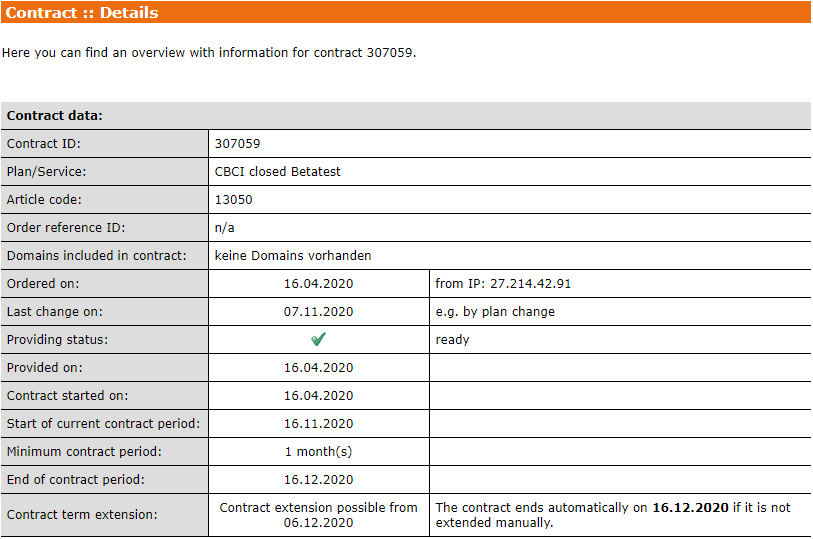Docker on LXC
First Post:
Last Update:
Word Count:
Read Time:
Last Update:
Word Count:
581
Read Time:
2 min
众所周知,lxc容器启动不了docker。而openVZ需要主机提供商修改某些配置文件。
这台机器由Euserv提供,是免费的,配置是1h1g,在2020.04.16订(bai)购(piao)。

闲着也是闲着,硬盘这么小(仅仅10GB)建个站就满了。于是想变着花样去玩。
突发奇想,想搭建一个Bitwarden,发现只有Docker能安装,于是先安装docker。安装docker使用官网教程,结果运行
1 | |
失败了,在官方GitHub上打开Issue却被关闭,不过也给我了一些有用信息。貌似lxc也是需要设置。
于是我抱着试一试的心态到官方论坛上试一试,得到的是维护
于是我又重新安装,结果还是一毛一样,于是继续吃灰也。
昨日又闲来无事,遂打开重装系统页,发现新增加了
CentOS 8 - 64bit - minimal v4
Ubuntu 20.04 LTS (Focal Fossa) - 64Bit - minimal v4
两个系统
重装为20.04,安装docker
- Update the apt package index and install packages to allow apt to use a repository over HTTPS:
1
sudo apt-get update
1 | |
- Add Docker’s official GPG key:
1 | |
- Verify that you now have the key with the fingerprint 9DC8 5822 9FC7 DD38 854A E2D8 8D81 803C 0EBF CD88, by searching for the last 8 characters of the fingerprint.
1 | |
- Use the following command to set up the stable repository. To add the nightly or test repository, add the word nightly or test (or both) after the word stable in the commands below. Learn about nightly and test channels.
1 | |
- Update the apt package index, and install the latest version of Docker Engine and containerd, or go to the next step to install a specific version:
1 | |
运行
1 | |
得到
1 | |
成功!
reward
支付宝 | Alipay


微信 | Wechat

